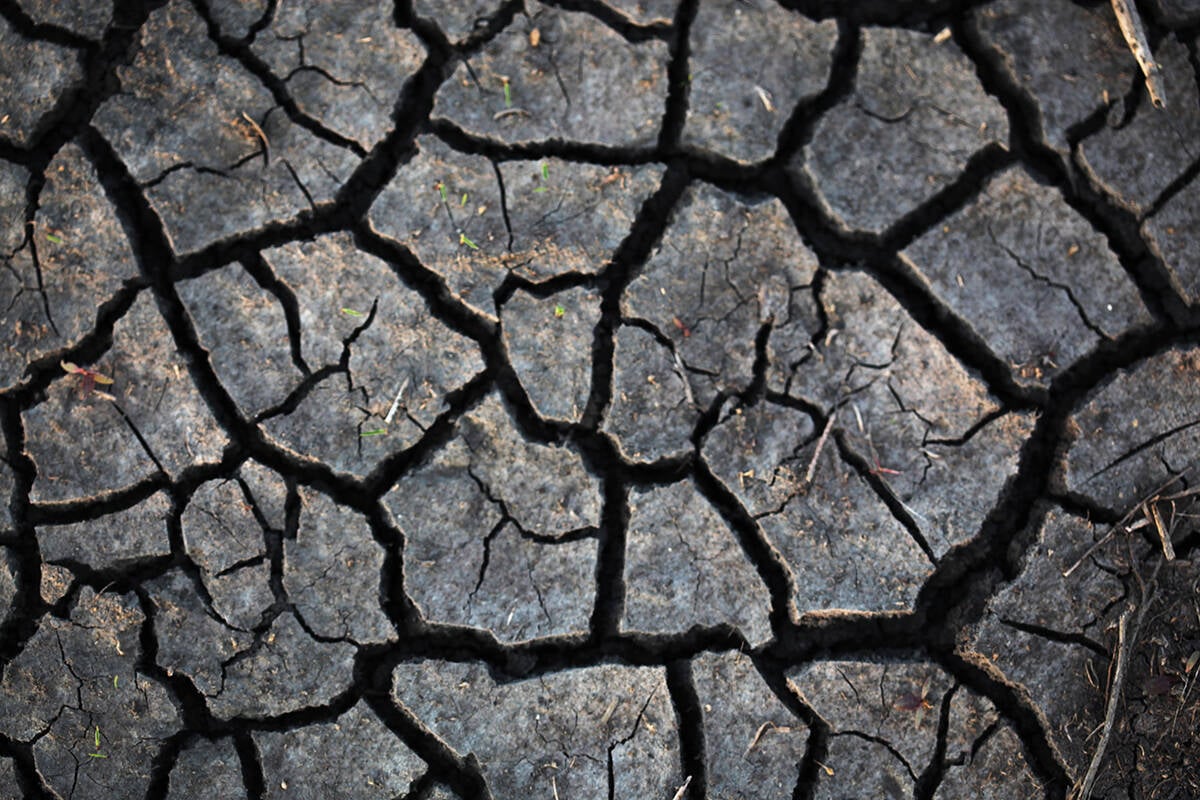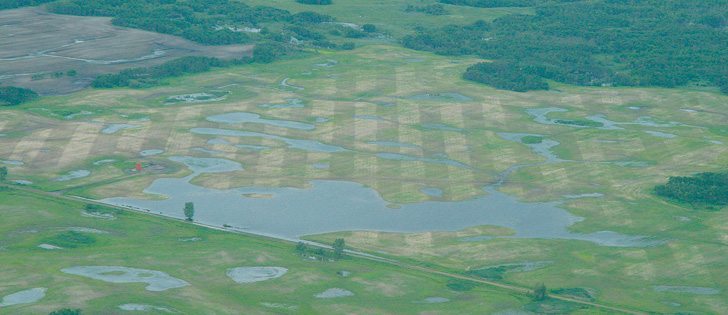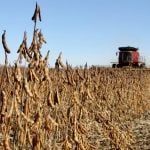Phosphorus in Lake Winnipeg | Scientist says runoff after rain contributes to rising levels
There’s no evidence Manitoba’s hog industry is causing the increasing levels of phosphorus flowing into Lake Winnipeg, says a senior federal water scientist.
However, there is evidence that holding water back on farm fields to reduce spring flooding could massively increase phosphorus levels.
“The trick is to prevent that (farming) landscape from being flooded,” Michael Stainton, a researcher with the federal Department of Fisheries and Ocean’s Freshwater Institute, said in an interview during the Manitoba Swine Seminar.
During a presentation at the conference, Stainton showed data that strongly suggests the phosphorus levels in Lake Winnipeg are directly tied to the gradually increasing phosphorus levels in Red River water since the 1970s and to the surge in water flow rates that have been occurring for almost two decades.
Read Also

Prairies have variable soil moisture conditions
The dry weather in the west was welcome for preserving grain quality and advancing harvest, but it has resulted in very dry soil moisture conditions.
When it rains more, more water flows off farmland and into the Red River, and phosphorus levels go up. Stainton said he hasn’t found any evidence that the expansion of the hog industry has anything to do with either the concentration of phosphorus in the water or the increasing overall levels seen in Lake Winnipeg.
“Correlation is not concentration,” he said in the interview.
Some have seen the surge in phosphorus levels in Lake Winnipeg from the late 1990s to now as directly tied to the increase of the hog industry, but Stainton said phosphorus concentration levels have grown steadily and were doing so for years before the hog industry started expanding.
What has changed, he said, is the amount of rainfall, and that is what carries phosphorus to the river and lake.
“Does hog production cause the Red River to flow more? Does it cause it to rain more? Does rain falling cause hog production to increase?” he said, humorously making his point.
Stainton said the original source of increased phosphorus concentrations in the water isn’t known, but it could simply be that zero-till farming leaves more trash on the field, which releases phosphorus when flooded.
The steady growth of phosphorus in the water has occurred simultaneously with the increase of zero-till farming, he added.
Stainton said tests he and his colleagues have done on the LaSalle River west of Winnipeg bear out his point. The area was significantly flooded in recent years, and tests of the water flowing into the LaSalle showed what happens when water is left on farmland.
The early water flowing off carries low levels of phosphorus, but the later water, well after the crest of the river has passed, is much higher in phosphorus concentration.
Stainton said he thinks that’s because the last water has been sitting on farm fields for days or weeks, allowing phosphorus from trash and soil to be absorbed and moved.
Because of that, any attempt to mitigate flooding by using the “waffle” concept must be done carefully. The “waffle” is the idea of temporarily storing water on land so that it doesn’t all hit the rivers at once and then letting it drain when the river levels have gone down.
“That’s good for (controlling) the flood, but it’s not going to be good for nutrients,” said Stainton.
“The water that comes off those fields is going to be much higher in phosphorus.”
Stainton said the best solution is to reinstitute wetlands, which can store water naturally and consume the phosphorus. Once the water has been held and the phosphorus reduced, its flow into the rivers will not have a major negative impact.
However, the biggest factor in phosphorus loading of water appears to be the wet cycle that Manitoba farmers have been dealing with since the early 1990s, which has caused much flooding and wetness-related problems such as fusarium headblight in cereals.
If the weather turned dry for a significant period, the phosphorus problem might significantly decline.
“The dominant, dominant, dominant change that occurs, that influences the phosphorus in the lake, is the amount of water flowing down the river, particularly if that amount is so high that it floods the landscape,” said Stainton.
















